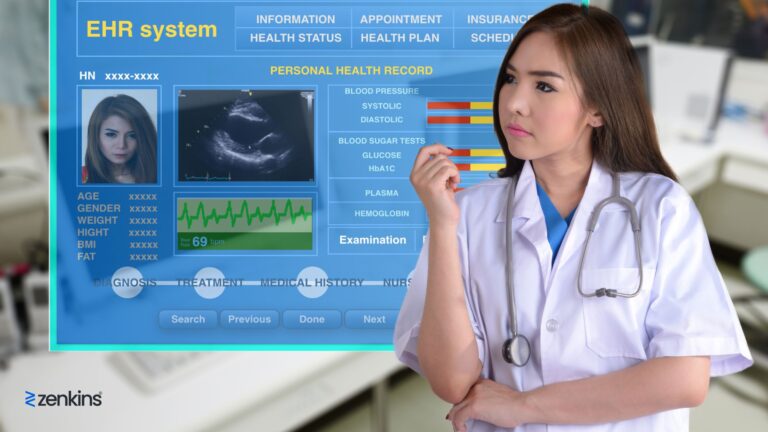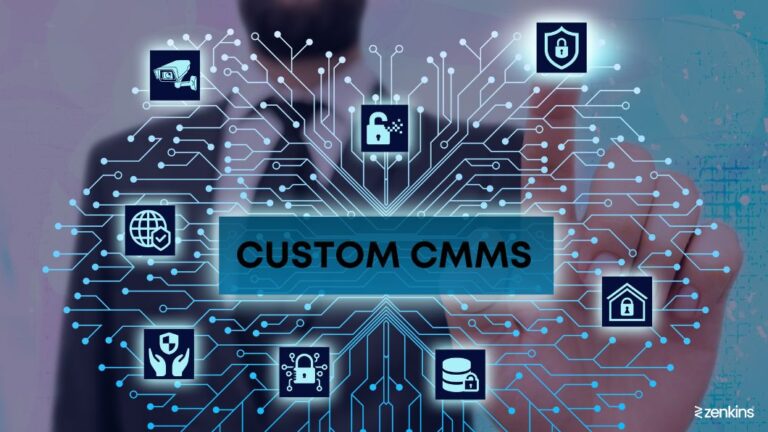Cybersecurity in Healthcare: Protecting Patient Data with Software
Table of Contents
The advancement of technology in the healthcare sector has brought about numerous benefits, including improved patient care and streamlined operations. However, it has also introduced new challenges, particularly in the realm of cybersecurity in healthcare. The protection of patient data has become a paramount concern as healthcare organizations increasingly rely on software solutions and development to store and manage sensitive information.
This article delves into the crucial topic of cybersecurity in healthcare, exploring the importance of safeguarding patient data and providing insights into common threats, essential software solutions, best practices for implementation, regulatory considerations, staff training, and future trends in the field. By understanding these key aspects, healthcare professionals can work towards enhancing cybersecurity measures and ensuring the protection of patient data in an ever-evolving digital landscape.
Introduction to Cybersecurity in Healthcare
Definition of Cybersecurity
Cybersecurity is like a virtual fortress that protects sensitive information from sneaky hackers. It’s all about keeping the bad guys out of your digital kingdom and ensuring that your data stays safe and secure.
Introduction to the Healthcare Sector
The world of healthcare is where doctors, nurses, and adorable little band-aids come together to make us feel better. The healthcare sector deals with some of the most important and sensitive information out there. We’re talking about patient records, medical history, and all the juicy details that should never fall into the wrong hands.
The Growing Importance of Cybersecurity in Healthcare
As technology advances faster than a hyped-up toddler on a sugar rush, the importance of cybersecurity in healthcare has skyrocketed. With everything going digital, medical records and sensitive patient data are more vulnerable than ever. We can’t just rely on a sturdy lock on the filing cabinet anymore; we need top-notch cybersecurity to keep those sneaky hackers at bay.
Importance of Protecting Patient Data
Risks Associated with Data Breaches in Healthcare
Picture this: your personal medical records floating around the internet like lost socks in a dryer. Not a pleasant thought, right? Data breaches in healthcare can lead to identity theft, fraud, and other shenanigans that no one wants to deal with. It’s like handing a thief your credit card and saying, “Have fun, mate!”
Impact of Data Breaches on Patients and Healthcare Organizations
Data breaches don’t just affect patients; they can also wreak havoc on healthcare organizations. From reputational damage to costly legal battles, the aftermath of a breach is like a never-ending nightmare. Plus, think of the poor patients who might lose trust in their healthcare provider. It’s like trying to do a trust fall, but your partner lets you crash to the ground.
Ethical and Legal Obligations to Protect Patient Data
Remember those ethical and legal obligations we talk about at boring dinner parties? Well, they come into play when it comes to protecting patient data. Healthcare organizations have a responsibility to keep patient information secure and follow all those pesky regulations. It’s like crossing your heart and promising to be a responsible guardian of data, except there’s no pinky swear involved.
Common Cybersecurity Threats in the Healthcare Sector
Overview of Common Cybersecurity Threats
In the wide world of cybersecurity, there’s a wide range of threats waiting to pounce. We’re talking about pesky viruses, sneaky phishing attempts, and malicious hackers looking to make a quick buck or cause some chaos. It’s like a never-ending game of dodgeball, except instead of rubber balls, you’re dodging malware.
Specific Threats Targeting Healthcare Organizations
As if dealing with regular cyber threats isn’t enough, healthcare organizations have their own set of villains trying to breach their castle walls. From ransomware attacks to insider threats, these cyber baddies are like the supervillains of the healthcare sector. It’s like an epic battle between good and evil, except replace the capes with firewalls.
Real-Life Examples of Cyber Attacks in Healthcare
Let’s take a stroll down memory lane and check out some real-life examples of cyber attacks in the healthcare world. We’ve got everything from the WannaCry ransomware attack that brought hospitals to their knees to the case of a nurse who just couldn’t resist snooping into patient records. It’s like a true crime podcast, but for cyber attacks.
Essential Software Solutions for Enhancing Cybersecurity
Overview of Cybersecurity Software
Now that we’ve scared you enough with tales of cyber villains, it’s time to arm yourself with the right tools. Cybersecurity software is like your trusted sidekick that helps keep the bad guys at bay. It’s a collection of nifty programs and tools designed to detect, prevent, and recover from cyber-attacks.
Antivirus and Anti-Malware Solutions
Who doesn’t love a good antivirus program? It’s like having a miniature superhero sitting on your computer, scanning for viruses and malicious software. These tools are essential for detecting and removing any unwanted digital nasties that might try to infiltrate your system.
Firewall and Intrusion Detection Systems
Imagine a digital fence around your network, keeping all the cyber intruders out. That’s where firewalls and intrusion detection systems come in. They monitor incoming and outgoing network traffic like security guards with finely tuned senses, ensuring that only authorized access is allowed.
Data Encryption and Secure Communication Tools
Data encryption is like sending your secret love letter in code, so only the intended recipient can decode it. In the world of healthcare, encryption is essential for protecting sensitive patient information. Secure communication tools, like encrypted messaging apps, ensure that information shared between healthcare professionals stays private and secure. It’s like whispering secrets in hushed tones but in the digital realm.
Best Practices for Implementing Cybersecurity Measures in Healthcare Organizations
Creating a Cybersecurity Strategy and Framework
When it comes to protecting patient data, a solid cybersecurity strategy is essential. Healthcare organizations should start by conducting a thorough assessment of their current systems and identifying potential vulnerabilities. By understanding the risks, they can develop a framework that outlines specific measures to mitigate those risks. This includes implementing firewalls, encryption protocols, and monitoring systems.
Developing and Enforcing Strong Password Policies
Password123? Yeah, we’ve all been guilty of using weak passwords at some point. But in healthcare, weak passwords are a big no-no. Implementing and enforcing strong password policies is crucial to prevent unauthorized access to patient data. Encourage employees to use complex passwords, change them regularly, and avoid reusing passwords across multiple accounts. And no, “password123” doesn’t count as complex!
Implementing Access Controls and User Authentication Measures
You know that feeling when you’re about to binge-watch your favorite show and Netflix asks, “Are you still watching?” Well, healthcare organizations should take a similar approach when it comes to granting access to patient data. Implementing access controls and user authentication measures ensures that only authorized personnel can view and modify sensitive information. Two-factor authentication and role-based access controls can add an extra layer of security.
Regular System Updates and Patch Management
Software updates are like getting your flu shot – they protect you from the latest threats. Healthcare organizations should prioritize regular system updates and patch management to ensure their systems have the latest security fixes. Ignoring updates is like leaving your front door wide open for hackers. So, stay on top of those updates and keep the cyber bad guys at bay.
Regulatory and Compliance Considerations for Healthcare Cybersecurity
Overview of Relevant Regulations and Standards
In the healthcare industry, regulations, and standards play a vital role in safeguarding patient data. Organizations need to familiarize themselves with regulations like the Health Insurance Portability and Accountability Act (HIPAA), the General Data Protection Regulation (GDPR), and others that may apply to their region. Staying informed about these requirements ensures compliance and helps prevent costly penalties.
The Role of HIPAA in Healthcare Cybersecurity
HIPAA has become a household name in the healthcare industry and for a good reason. It sets the standard for protecting sensitive patient information. Compliance with HIPAA rules ensures that healthcare organizations have proper security measures in place, such as data encryption, access controls, and training programs for staff. So, it’s not just about keeping your grandma’s secret meatball recipe safe; it’s about safeguarding patient privacy too.
Compliance Audits and Penalties
Imagine your boss showing up unexpectedly to assess your work performance. Compliance audits are just like that, except they focus on cybersecurity practices. Healthcare organizations may undergo regular audits to ensure they are complying with applicable regulations. Failing an audit can lead to hefty fines and damage to a company’s reputation. So, better start following those guidelines to avoid any unwelcome surprises.
Aligning Cybersecurity Practices with Industry Regulations
In the world of healthcare cybersecurity, rules are not guidelines to be disregarded like pirate code. Organizations must align their cybersecurity practices with industry regulations. This means implementing measures that protect patient data, conducting risk assessments, and regularly reviewing and updating security protocols. Remember, compliance is not just a buzzword – it’s a necessity.
The Role of Staff Training and Awareness in Safeguarding Patient Data
Importance of Staff Training in Cybersecurity
Ever heard the saying, “A chain is only as strong as its weakest link”? The same applies to healthcare organizations. No matter how advanced your cybersecurity measures are, human error remains a significant risk factor. That’s why staff training is crucial. Educating employees on cybersecurity best practices, such as recognizing phishing emails and avoiding suspicious downloads, can significantly reduce the chances of a data breach.
Common Security Risks and Best Practices for Employees
Let’s face it – hacking into patient data is not on anyone’s bucket list. However employees can inadvertently put data at risk if they’re not aware of common security risks. From using unsecured Wi-Fi networks to falling for social engineering tactics, there are plenty of pitfalls to avoid. Training employees on best practices, such as avoiding clicking on suspicious links and locking their screens when away from their desks, can go a long way in safeguarding patient data.
Creating a Culture of Cybersecurity Awareness
Creating a culture of cybersecurity awareness is like baking a cake – it takes time, effort, and a dash of creativity. Encourage employees to take ownership of cybersecurity by fostering a culture that prioritizes data protection. This can be done through regular communications, reminding staff of their responsibilities, and celebrating positive cybersecurity practices. Go ahead, throw a party when someone identifies a phishing attempt – just don’t forget the cake!
Ongoing Education and Training Opportunities
Cybersecurity is not a one-and-done deal. It’s an ever-evolving field. Continuous education and training are essential to keep employees up to date with the latest threats and preventive measures. Hosting workshops, providing online resources, and offering certification programs can help employees stay knowledgeable and empowered in the fight against cyber threats.
Future Trends and Innovations in Healthcare Cybersecurity
Emerging Technologies to Combat Cyber Threats
As technology advances, so do the tools available to cybercriminals. However, on the bright side, emerging technologies also offer innovative ways to combat cyber threats. From artificial intelligence-powered threat detection systems to blockchain-based data encryption, healthcare organizations can leverage these advancements to strengthen their cybersecurity defenses. So, while cybercriminals may be getting smarter, so are the cybersecurity technologies!
Collaboration and Information Sharing among Healthcare Organizations
In the world of cybersecurity, united we stand, divided we fall. Healthcare organizations must collaborate and share information about emerging threats and preventive measures. By working together, they can establish a strong network of support and help one another stay one step ahead of cybercriminals. So, no more keeping secrets – sharing is caring in the cybersecurity realm!
The Importance of Cybersecurity in the Age of Telemedicine and IoT
With the rise of telemedicine and the Internet of Things (IoT), the importance of cybersecurity is more critical than ever. Connected devices and remote healthcare services create new entry points for cyber attacks. Healthcare organizations must prioritize cybersecurity and ensure that the devices and networks they use are secure. After all, nobody wants a hacker interrupting their virtual doctor’s appointment – talk about an unwanted eavesdropper!
Building Resilient Cybersecurity Programs for the Future
As the saying goes, “The best defense is a good offense.” Building resilient cybersecurity programs means taking a proactive approach to identify and address vulnerabilities before they are exploited. This involves regularly reviewing and updating security protocols, investing in the latest technologies, and staying informed about emerging threats. By constantly evolving and adapting, healthcare organizations.
In conclusion, cybersecurity in healthcare is an ongoing and critical endeavor. Protecting patient data with robust software solutions, implementing best practices, and fostering a culture of cybersecurity awareness is essential for safeguarding sensitive information. With the ever-evolving landscape of cyber threats, healthcare organizations must remain vigilant and proactive in mitigating risks. By staying informed about regulatory requirements and embracing emerging technologies, the healthcare industry can continue to adapt and innovate in order to protect patient data and ensure the trust and safety of all individuals involved in the healthcare ecosystem.
FAQ
Why is cybersecurity important in the healthcare sector?
Cybersecurity is crucial in the healthcare sector to protect sensitive patient data from unauthorized access, breaches, and potential misuse. Patient data includes not only personal information but also medical history, diagnoses, and treatment plans. Maintaining robust cybersecurity measures ensures patient privacy, builds trust in healthcare organizations, and mitigates the risk of financial and reputational damage.
What are the common cybersecurity threats faced by healthcare organizations?
Healthcare organizations face various cybersecurity threats such as ransomware attacks, phishing scams, insider threats, and data breaches. These threats can lead to the unauthorized disclosure of patient information, disruption of healthcare services, financial losses, and compromised patient safety.
What are some essential software solutions for enhancing cybersecurity in healthcare?
Essential software solutions include antivirus and anti-malware software, firewall and intrusion detection systems, data encryption tools, secure communication platforms, and vulnerability management systems. These solutions help detect and prevent malicious activities, secure network infrastructures, protect data in transit and at rest, and identify and address potential vulnerabilities.
How can healthcare organizations improve staff training and awareness regarding cybersecurity?
Healthcare organizations can improve staff training and awareness by providing regular cybersecurity education programs, conducting simulated phishing exercises, promoting strong password and authentication practices, and emphasizing the importance of reporting suspicious activities. Ongoing training ensures that employees are equipped with the knowledge and skills needed to identify and mitigate potential security risks.






